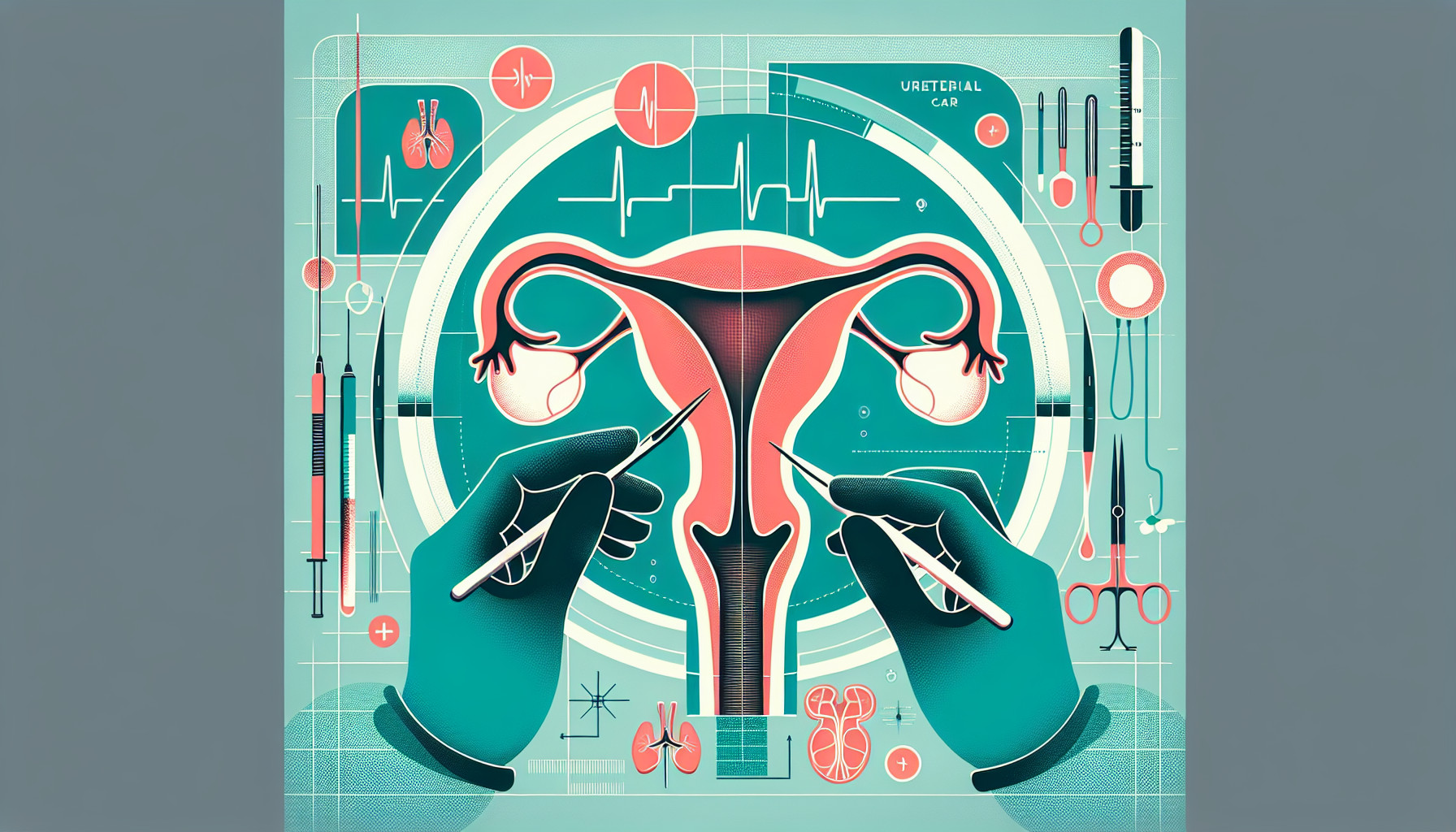Our Summary
Vesicoureteral reflux (VUR) or urinary reflux, is a common issue in children where urine flows back into the kidneys from the bladder. Traditionally, this was treated with a surgery known as open vesicoureteral reimplantation. However, a less invasive procedure called vesicoscopic ureteral reimplantation is now often used.
The research involved 18 children (9 boys and 9 girls) who had this less invasive procedure, using a method called the modified Glenn-Anderson technique. The results were promising: none of the surgeries had to be converted to the traditional open surgery and the average surgery time was between 143 to 194 minutes. Only one minor complication was reported and all the patients were discharged 2 days after the surgery.
In the follow-up checks, it was found that none of the patients had VUR. The method proved to be effective, causing minimal complications and was easier to perform due to better visibility during the procedure.
However, the researchers recommend that more studies need to be done to confirm the long-term benefits and safety of this procedure in a larger number of cases.
FAQs
- What is vesicoureteral reflux (VUR) and how is it traditionally treated?
- What are the benefits of the less invasive vesicoscopic ureteral reimplantation procedure?
- What were the findings from the research conducted on children who underwent the less invasive procedure?
Doctor’s Tip
A doctor might advise a patient undergoing ureteral reimplantation to follow post-operative care instructions carefully, including taking prescribed medications, avoiding strenuous activities, and attending follow-up appointments. It is important to communicate any unusual symptoms or concerns to the healthcare provider promptly. Additionally, maintaining good hydration and a healthy lifestyle can support the healing process and overall recovery.
Suitable For
Patients who are typically recommended for ureteral reimplantation include:
- Children with vesicoureteral reflux (VUR) who have recurrent urinary tract infections or kidney damage
- Patients with severe VUR that does not improve with conservative treatment
- Patients with high-grade VUR (Grade III-V)
- Patients with bilateral VUR
- Patients with VUR that is causing bladder dysfunction or other urinary tract issues
It is important to consult with a urologist or pediatric urologist to determine if ureteral reimplantation is the best treatment option for a specific patient.
Timeline
Overall timeline of a patient before and after ureteral reimplantation:
Before surgery:
- Diagnosis of vesicoureteral reflux (VUR) through imaging tests like ultrasound or voiding cystourethrogram.
- Discussion with a pediatric urologist about treatment options, including ureteral reimplantation.
- Pre-operative evaluation and preparation for surgery, which may involve blood tests, imaging tests, and other assessments.
During surgery:
- Less invasive vesicoscopic ureteral reimplantation is performed using the modified Glenn-Anderson technique.
- Surgery time averages between 143 to 194 minutes, with no need for conversion to open surgery.
- Patient is discharged from the hospital 2 days after the surgery, with minimal complications reported.
After surgery:
- Follow-up checks show that none of the patients have VUR.
- Patients experience improved urinary flow and reduced risk of kidney damage.
- Long-term benefits and safety of the procedure need to be confirmed through more studies with a larger number of cases.
Overall, the patient experiences a successful and minimally invasive ureteral reimplantation procedure, leading to improved urinary function and reduced risk of complications associated with VUR.
What to Ask Your Doctor
Some questions a patient may consider asking their doctor about vesicoscopic ureteral reimplantation include:
- What is vesicoscopic ureteral reimplantation and how does it differ from traditional open vesicoureteral reimplantation?
- Am I a candidate for vesicoscopic ureteral reimplantation?
- What are the potential risks and complications associated with this procedure?
- How long does the surgery typically take and what is the recovery process like?
- Will I need to stay in the hospital after the surgery and for how long?
- What are the expected outcomes of vesicoscopic ureteral reimplantation in terms of treating VUR?
- Are there any potential long-term effects or considerations I should be aware of?
- Are there any alternative treatment options for VUR that I should consider?
- How often will follow-up appointments be needed after the surgery?
- Are there any lifestyle changes or restrictions I should follow post-surgery to optimize my recovery and outcomes?
Reference
Authors: Nishi M, Eura R, Hayashi C, Gohbara A, Yamazaki Y. Journal: J Pediatr Urol. 2023 Jun;19(3):322.e1-322.e7. doi: 10.1016/j.jpurol.2023.02.018. Epub 2023 Feb 26. PMID: 36959038
